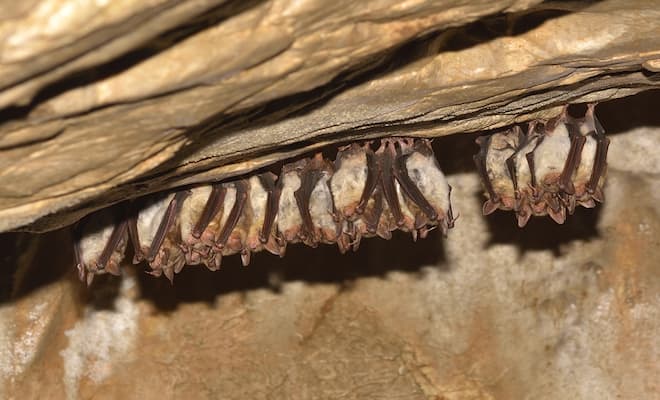Big Brown Bats are commonly found hibernating in populated settlements like cities and towns. The reason why big brown bat needs to hibernate is because of the scarcity of food. When food is not available, it is forced to take a long nap so to speak to preserve energy and to make it through cold winters. Bat hibernation typically starts in the colder months around November and move away from their summer roosts. They come out of hibernation in spring. They roost in small groups, contrary to its smaller counterpart, the little brown bat. Bats choose caves, rock crevices, and abandoned structures to hibernate as their hibernacula.
Not sure if you have bats in your attic or do want to get rid of them completely? Hire specialists from Bat Control for affordable and guaranteed bat removal services!
The big brown bat requires a temperature between 35-40 F or between approximately 2 to 5 C. This is because the bat takes energy consumption into account. The warmer it is the more energy is used up. If it’s too cold, it will be too cold to survive. During hibernation, an extreme dip in metabolic rate and heart rate occurs. They will go long periods without food and will go even minutes without taking a breath. To prepare for hibernation, the big brown bat will eat loads of insects during the summer to fatten up.
They will also look for suitable spots away from their summer roosts. Ideally, it is a location that is secluded, dark, and warm to bat standards. In modern times, however, ats have found a great attractive alternative as their hibernacula. Big brown bats will invade attic spaces because of all the perks it offers just like their natural hibernacula. Attics are dark, secluded, warm, and above all, safe. When bats are disturbed from their hibernation, they can lose tons of energy just by simply getting away from the danger. The big brown bat does not have to worry about that in a cozy and warm attic.
Big brown bats get inside the attic through numerous entry points that are often in plain sight, but not for the inexperienced. For this, you need to hire a professional and experienced bat control specialist from Exterminator Peterborough. Bats enter through holes in the gable, soffits, damaged roof shingles, and fascia board. If there is a hole, the bat can thread through it quite easily. Bats are incredibly agile and flexible animals that can get through a hole as big as a quarter. These entry points are all around and need to be sealed professionally would you want to avoid a second or future infestation.
At Exterminator Peterborough we guarantee bat removal at low prices done by experienced and talented bat removal specialists. We have the tools, the equipment, and the expertise to get them out, and to make sure they stay out with durable sealing and proofing materials. To hire us, call us.
